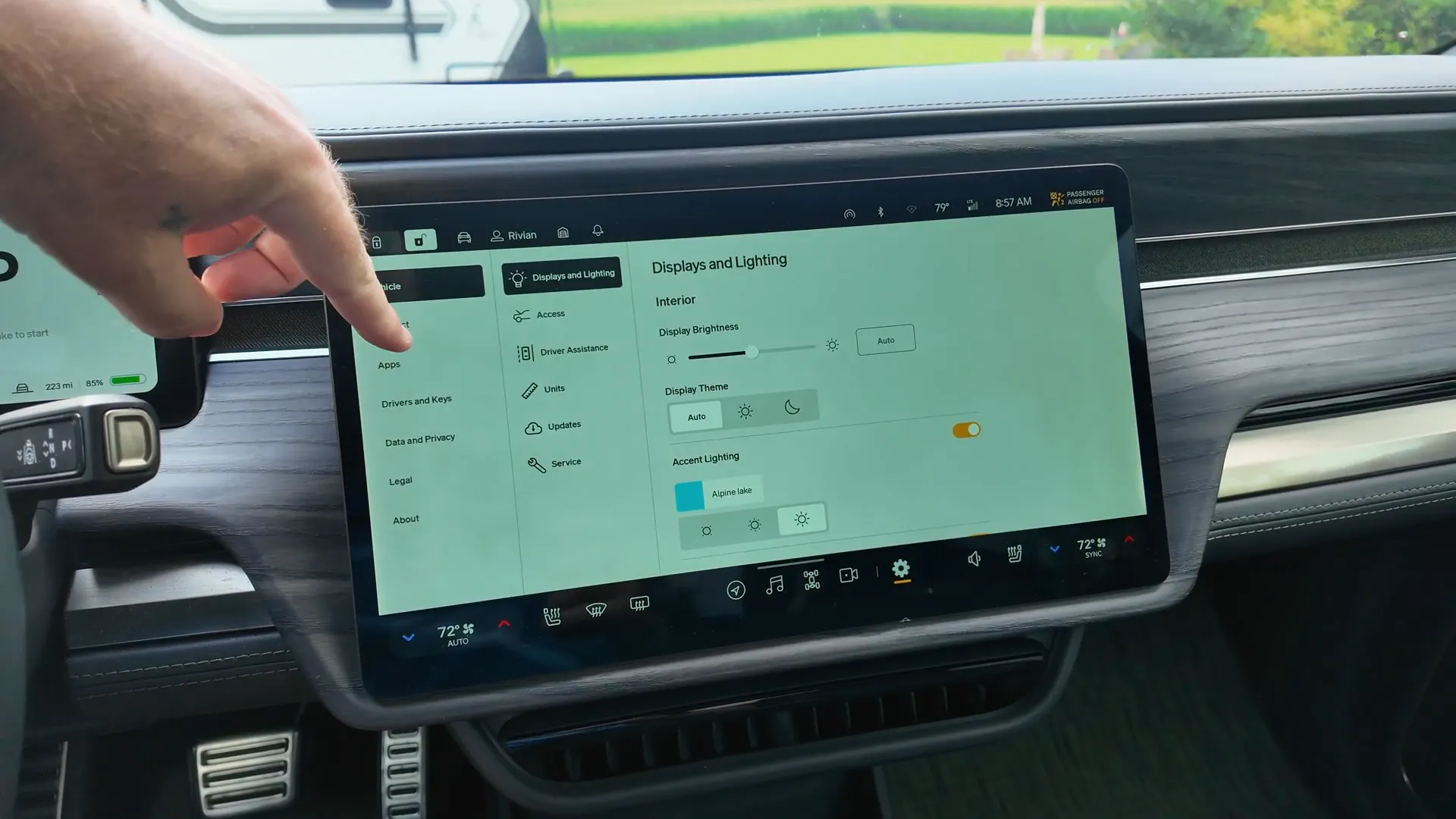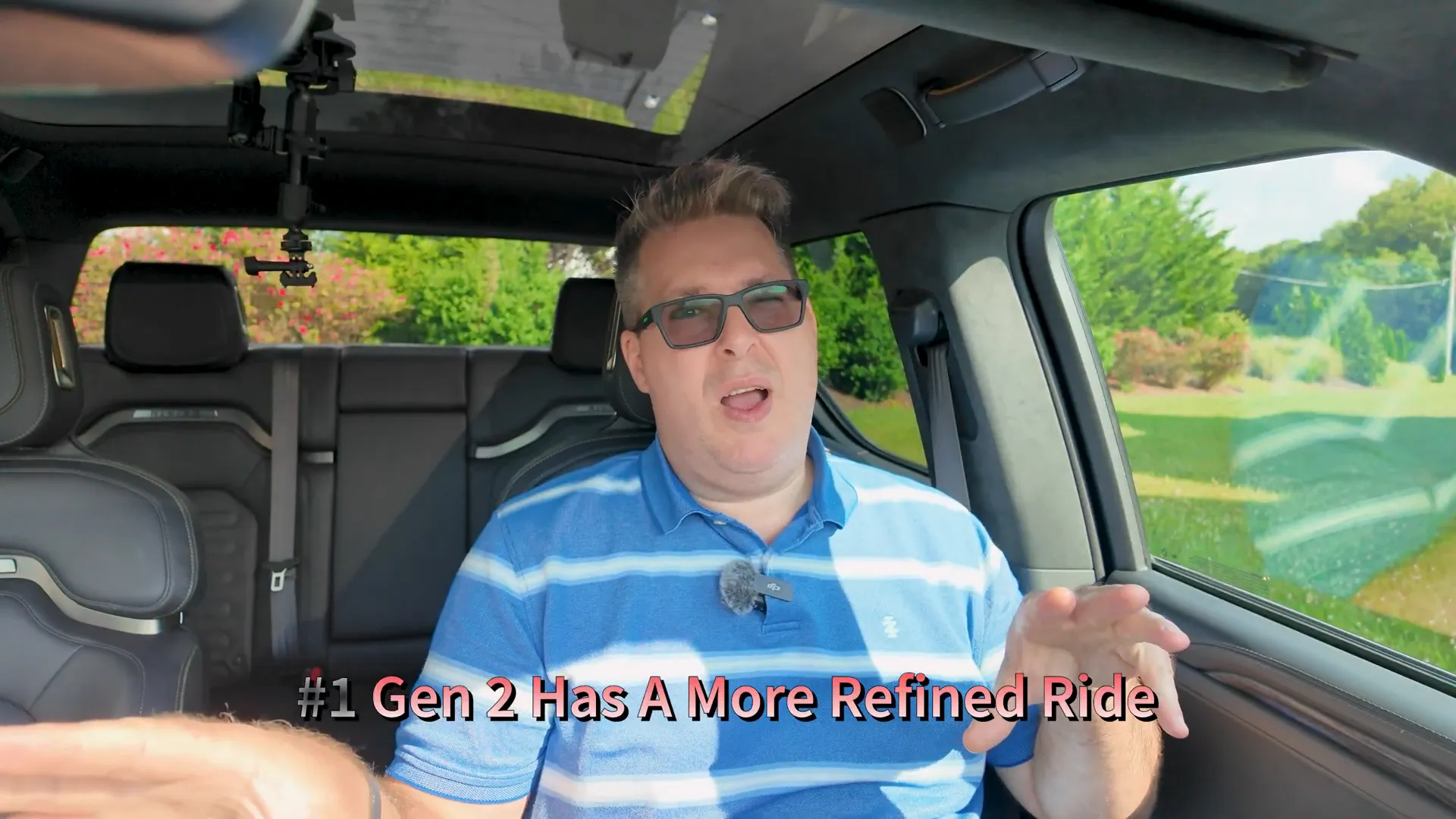
Rivian New or Used Car: Top 5 Reasons to Choose First Generation vs. Second Generation R1S and R1T
Share
If you’re in the market for a Rivian electric vehicle and debating whether to buy a used first generation R1S or R1T or invest in a brand new second generation model, this guide is for you. I’m Ken from Electrified Outdoors, where I explore living and adventuring with electric vehicles, especially outdoors. In this article, I’ll walk you through the top five reasons why a first generation Rivian might be the better choice for you, as well as the top five reasons to consider a second generation model instead.
Choosing between a used or new Rivian depends on your priorities, budget, and how you plan to use the vehicle. Let’s dive into the details so you can make an informed decision.
Top 5 Reasons to Choose a First Generation Rivian R1S or R1T
1. Price: Exceptional Value on Used First Gen Models
Price is often the first thing buyers consider. Due to supply chain shortages and inflation over the past few years, new Rivian prices have increased substantially. Additionally, the $7,500 federal EV tax credit for vehicles priced under $80,000 will completely phase out by September 30, 2025.
This makes used first generation R1 vehicles—both the R1S SUV and R1T pickup—an incredible value. While you won’t find new first generation models in inventory, there are often demo vehicles with full warranties available. Just be sure to check the vehicle’s production date, delivery date, and remaining warranty coverage when buying used.
Overall, if budget is your main concern, the first generation Rivian models offer a proven platform at a significantly lower price point.

2. Matured, Stable Software Experience
The first generation Rivians benefit from a more mature and stable software platform. The second generation vehicles introduced an entirely new hardware architecture, which initially came with some glitches and nagging bugs requiring occasional reboots.
While Rivian has made progress fixing Gen 2 software issues, some users still experience minor hiccups. In contrast, the first generation software has been refined over time and offers a smoother, more reliable user experience.

3. Hardware Kinks Have Been Worked Out
Early first generation Rivians had a few hardware challenges, such as issues with the power tonneau cover and various fasteners and components like knuckle fasteners and half shafts. Many of these problems have been addressed through field service actions and refinements based on customer feedback.
Because of this, first generation owners typically experience fewer visits to the service center compared to second generation owners who may still face new hardware "teething issues".

4. Highly Capable Hardware and Performance
Don’t let the age fool you—the first generation R1 vehicles are still extremely capable. Both the R1S and R1T come with quad motors delivering up to 835 horsepower and 908 lb-ft of torque, making them powerful on-road performers and formidable off-roaders.
While the second generation offers some suspension improvements for a smoother ride, the first generation’s hardware remains a strong contender for those wanting robust performance without compromise.

5. More Standard Features Included
The first generation launch edition Rivians came fully loaded with features that Rivian has since removed or made optional on the second generation models. For example:
- The front trunk (frunk) on first gen vehicles is significantly larger because the Gen 2 frunk space is reduced by the new heat pump system.
- Early First gen vehicles include 12V power ports both in the frunk and under the primary display, which are missing from Gen 2 models. This is important if you use 12V accessories like trailer backup cameras.
- Premium Meridian audio systems were standard on early first gen models, while on Gen 2, premium audio is a $1,750 upgrade. Many owners agree the Meridian system offers better sound quality.
- Wood accents on seat backs are available on early first gen but limited on Gen 2 to only tri-motor and quad-motor trims.
- The power tonneau cover, despite its early issues, remains a useful feature if you can find one in working condition.
Overall, first generation Rivians come with a richer set of standard features that may be important depending on your needs.

Top 5 Reasons to Choose a New Second Generation Rivian R1S or R1T
1. Refined Suspension and Improved Ride Quality
The second generation Rivians are lighter and feature a more refined suspension setup. This translates to a smoother ride that better absorbs bumps and road imperfections. Rivian has also worked extensively on reducing noise, vibration, and harshness (NVH), making Gen 2 vehicles noticeably quieter and more comfortable inside.
If you prioritize a plush, refined driving experience, it’s worth test driving a Gen 2 to see if the upgraded ride quality justifies the investment.

2. Newer, More Efficient Powertrains
The second generation models offer dual motor powertrains with EPA-rated ranges between 270 miles on the standard pack and up to 410 miles on the Max Pack. These powertrains are more efficient than the Bosch sourced quad motor setup on first gen vehicles, especially on highway driving.
One efficiency feature unique to Gen 2 dual motor Rivians is the ability to disengage the rear drive unit above 20 mph, saving energy on the highway. This can translate to better range and lower energy costs for daily and long-distance driving.
3. Advanced Driver Assistance and Autonomy Features
The Rivian Autonomy platform on second generation vehicles is a significant upgrade. It supports advanced driver assistance features like lane change on command and is expected to receive continuous software enhancements.
First generation vehicles will only receive bug fixes for their ADAS, with no new features planned. If you heavily rely on driver assistance for highway or long-distance driving, the Gen 2 autonomy system is a compelling reason to choose a new vehicle.

4. Native Tesla NACS Charging Port (Starting 2026 Model Year)
One exciting upcoming feature for 2026 and later model year Rivians is the native Tesla North American Charging Standard (NACS) port. This means you won’t need an adapter to use Tesla Superchargers—you can plug directly in, making road trip charging more convenient.
Given Tesla’s Supercharger network is the largest and most reliable at the moment, this native compatibility could be a game changer for frequent travelers.
5. Dynamic Adventure Lighting (Matrix Headlights)
The second generation Rivians come equipped with dynamic adventure lighting, a matrix LED headlight system that improves nighttime safety and visibility. This technology automatically adjusts the beam pattern to prevent blinding oncoming drivers and creates cutouts around vehicles in adjacent lanes.
It also lights the road as you turn and adjusts beam height dynamically. Experiencing this lighting system in person highlights a dramatic improvement over the first generation’s lighting.

Additional Considerations
It’s worth noting that while the second generation Rivians bring many exciting features, they are not completely free from issues. For example, my wife’s Gen 2 R1S has experienced charging interruptions on Tesla Wall Connectors due to an overcurrent error, likely related to heat. The workaround is to reduce the charging rate, but it shows that Gen 2 models still have some bugs to iron out.
Meanwhile, first generation vehicles have had their kinks worked out over time, offering a more proven and reliable platform.
Conclusion: Which Rivian Should You Choose?
If you want a proven, reliable electric truck or SUV with excellent value and a solid feature set, the first generation Rivian R1T or R1S is a fantastic choice. You’ll get quad motor power, mature software, and many standard features without paying top dollar.
On the other hand, if you crave the latest technology, improved ride quality, longer range, and advanced driver assistance, and are willing to be patient as Rivian continues to refine the second generation, then a new Gen 2 Rivian might be worth the investment.
Ultimately, your decision should be guided by how you intend to use the vehicle, your budget, and which features matter most to you.
What do you think? Are you leaning toward a first generation used Rivian or a brand new second generation? Share your thoughts below!
Shop Rivian R1 Vehicles
Shop available inventory R1 vehicles & get rewarded for using our referral code. Thank you for your support!
Rivian Shop